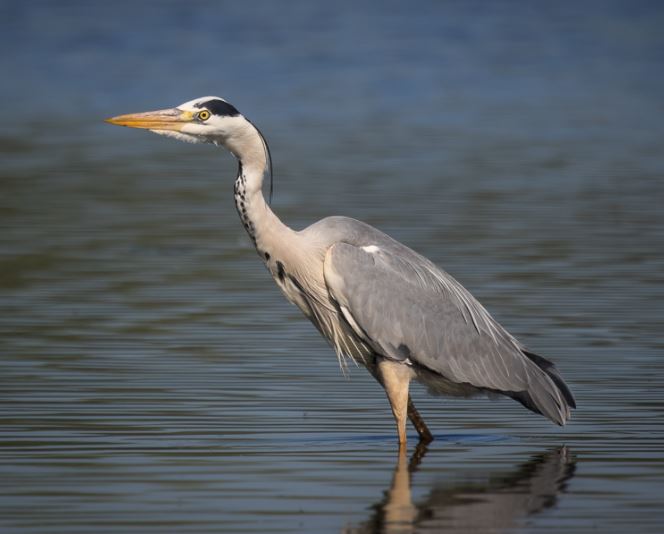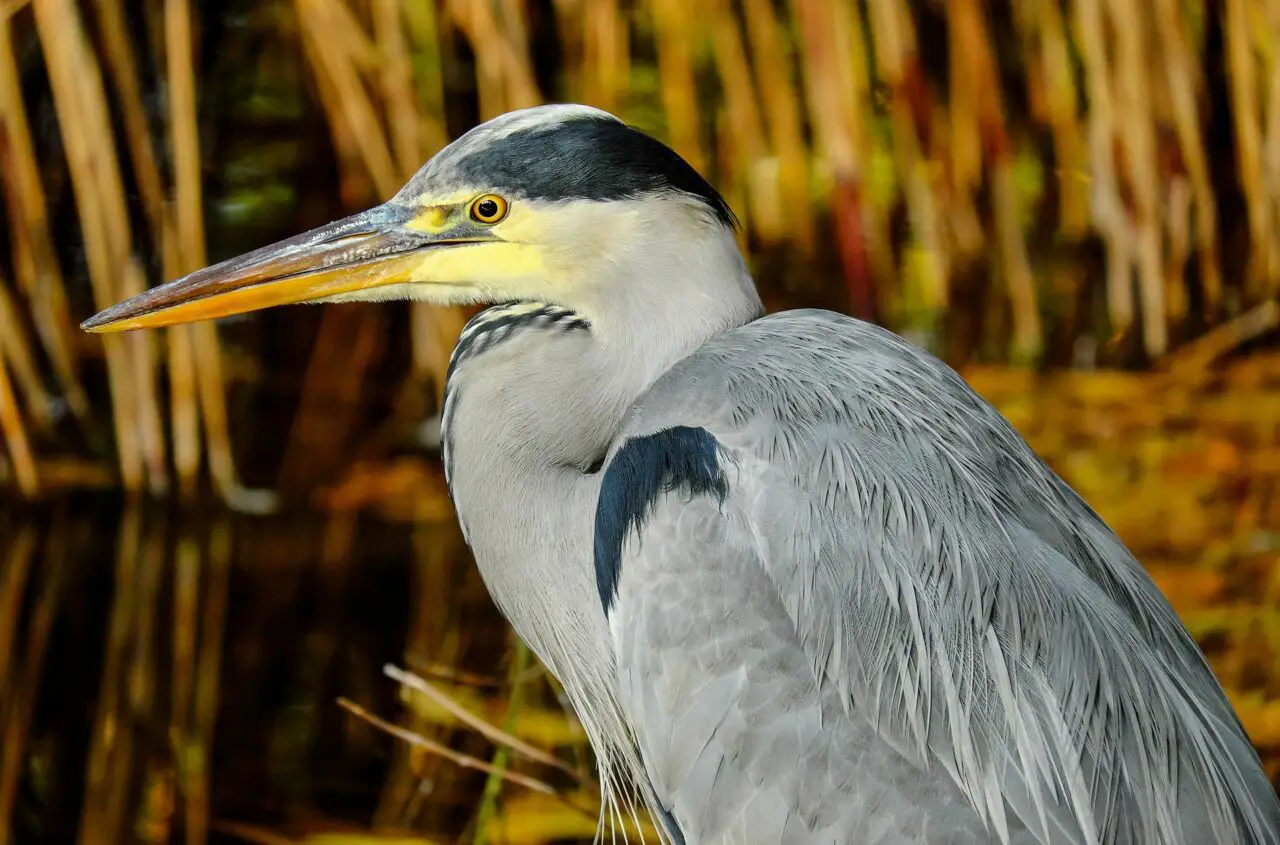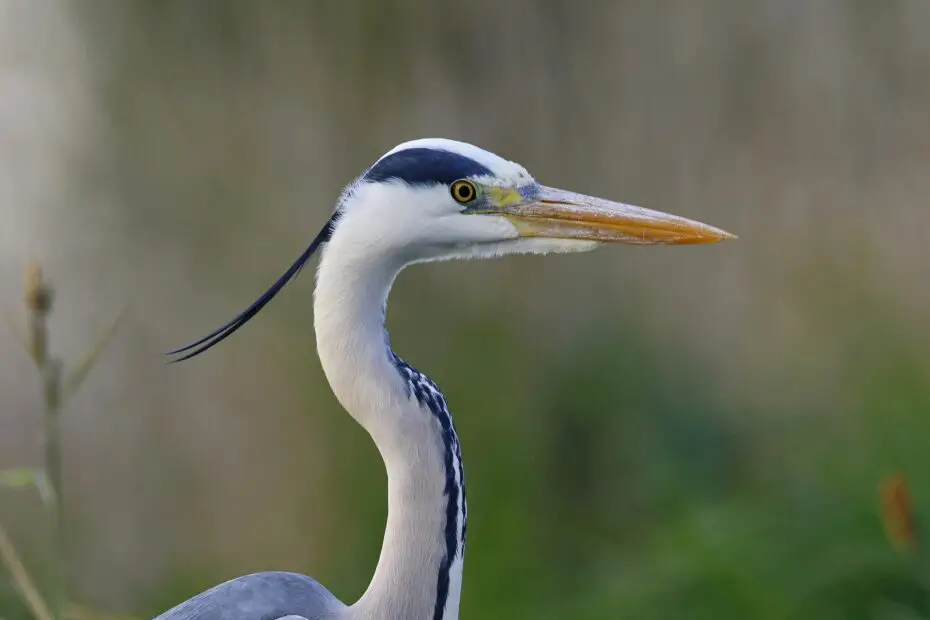The Grey Heron (Ardea cinerea) is a magnificent bird that captures the attention of nature enthusiasts and bird watchers worldwide. With its elegant stature and patient hunting techniques, this avian species has a captivating presence in wetland habitats. In this article, we will delve into the world of the Grey Heron, exploring its physical characteristics, distribution, behavior, conservation status, and its interactions with humans.
You may also want to know everything about bluebird eggs.
1. Introduction
Introducing the Grey Heron, we embark on a journey to uncover the secrets of this iconic waterbird. With its widespread presence and distinct appearance, the Grey Heron has become a symbol of serenity and tranquility in various cultures.
2. Description of the Grey Heron
The Grey Heron stands tall with an average height ranging from 90 to 100 centimeters (35 to 40 inches). Its slender body is complemented by long legs, which aid in wading through shallow waters. Let’s explore the physical characteristics that make this bird truly remarkable.
2.1 Size and Weight
On average, an adult Grey Heron weighs between 1.5 to 2 kilograms (3.3 to 4.4 pounds). These dimensions, combined with their impressive wingspan of approximately 175 to 195 centimeters (69 to 77 inches), contribute to their graceful flight patterns.

2.2 Plumage
The Grey Heron boasts a distinctive plumage, primarily consisting of shades of grey. Its neck exhibits a light-colored, elongated, and feathery appearance, while its body features a contrasting darker hue. During the breeding season, these birds develop elongated feathers on their head and neck, adding a touch of elegance to their overall appearance.
2.3 Beak and Eyes
One of the most striking features of the Grey Heron is its long, sharp beak, perfectly adapted for capturing prey. The beak displays a yellowish color with a dark tip, providing a stark contrast against its plumage. The bird’s eyes, usually yellow, contribute to its sharp vision, enabling it to spot prey from a considerable distance.
3. Distribution and Habitat
The Grey Heron has a broad distribution range, encompassing various parts of the world. Understanding its habitat preferences and geographic range is crucial in appreciating its adaptability and conservation needs.
3.1 Geographic Range
Grey Herons are native to Europe, Asia, and Africa. They can be found across temperate and tropical regions, occupying both freshwater and coastal habitats. These adaptable birds have also been introduced to other parts of the world, including North America and Australia.
3.2 Preferred Habitats
While the Grey Heron is versatile in terms of habitat selection, it exhibits a strong affinity for wetlands. Lakes, rivers, marshes, and estuaries serve as ideal hunting grounds, offering a bountiful supply of fish, amphibians, and other aquatic creatures. Additionally, they are often seen in proximity to rice fields, ponds, and even urban water bodies, showcasing their ability to adapt to human-altered environments.
4. Behavior and Feeding Habits
The behavior and feeding habits of the Grey Heron are a fascinating spectacle to observe. Let’s dive into the captivating world of their hunting techniques, diet, and breeding behavior.

4.1 Hunting Techniques
The Grey Heron is renowned for its patient and stealthy hunting approach. It adopts a statuesque posture, standing still for extended periods near the water’s edge, waiting for unsuspecting prey to come within striking distance. With lightning speed, it lunges forward, extending its long neck to snatch fish or other small aquatic creatures. Their precise and calculated movements exhibit the mastery of their hunting techniques.
4.2 Diet
As opportunistic feeders, Grey Herons have a varied diet that predominantly consists of fish. They possess sharp beaks that aid in grasping and swallowing their prey whole. Apart from fish, their menu includes frogs, small mammals, insects, and occasionally even small birds. Their adaptability allows them to explore different food sources depending on the availability in their habitats.
4.3 Breeding Behavior
During the breeding season, Grey Herons engage in elaborate courtship displays and nest-building rituals. They construct large stick nests high up in trees or on cliffs, forming colonies known as heronries. Males showcase their dedication by presenting nesting materials to the females, solidifying their bond. Once the eggs are laid, both parents take turns incubating them until they hatch. The young chicks grow rapidly under their parents’ care until they are ready to fledge and explore the world on their own.
5. Conservation Status
Considering the environmental challenges faced by numerous species, understanding the conservation status of the Grey Heron is crucial. Let’s shed light on the factors influencing their population and the measures taken to ensure their protection.
The Grey Heron is generally considered a species of least concern on the International Union for Conservation of Nature (IUCN) Red List. Their adaptable nature and broad distribution contribute to their relatively stable population. However, habitat loss due to human development, pollution, and disturbances in nesting sites pose threats to their long-term survival. Conservation efforts focus on preserving wetland habitats, implementing sustainable fishing practices, and raising awareness about the importance of protecting these remarkable birds.
6. Interactions with Humans
Throughout history, Grey Herons have captivated human imagination and found their place in various cultures. However, they also face both positive and negative interactions with humans. Let’s explore their cultural significance and the challenges they encounter.
6.1 Cultural Significance
In many cultures, the Grey Heron symbolizes patience, grace, and tranquility. Their majestic presence has inspired artwork, literature, and folklore. They often serve as muses for poets and artists, symbolizing a connection to nature’s serenity.
6.2 Human Threats
While admired by many, Grey Herons also face certain threats due to human activities. Habitat destruction, pollution of water bodies, and disturbances to nesting sites can disrupt their natural behavior and breeding patterns. Additionally, collisions with power lines and structures pose risks to their safety. It is crucial for humans to understand the importance of coexisting with these beautiful creatures and taking measures to mitigate potential conflicts.
7. Grey Herons in Popular Culture
Grey Herons have made their mark in popular culture, leaving a lasting impression on literature, art, and even sports. Their elegant and distinctive appearance has inspired numerous references in various forms of media, including books, paintings, and films. Their association with tranquil waters and their unique hunting techniques have also made them a popular subject in wildlife documentaries and nature photography.
Conclusion
In conclusion, the Grey Heron stands as a remarkable and majestic bird, thriving in wetland habitats across the globe. Its slender physique, striking plumage, and patient hunting techniques make it a captivating sight for nature enthusiasts. From its adaptability in diverse habitats to its cultural significance, the Grey Heron has left an indelible mark on human society.
While the Grey Heron’s population remains relatively stable, conservation efforts must continue to protect their habitats and address the threats they face. Preserving wetlands, promoting sustainable fishing practices, and raising awareness about the importance of coexistence are essential steps in ensuring their long-term survival.
As we appreciate the beauty and grace of the Grey Heron, let us strive to conserve their habitats and admire them from a respectful distance. These elegant birds symbolize the delicate balance of nature and remind us of the wonders that exist in the tranquil waters they call home.
FAQs (Frequently Asked Questions)
- Q: Are Grey Herons endangered? A: Grey Herons are currently not considered endangered. They are classified as a species of least concern on the IUCN Red List.
- Q: How do Grey Herons catch fish? A: Grey Herons employ a patient hunting technique. They stand still at the water’s edge and use their sharp beaks to swiftly snatch fish or other small aquatic creatures.
- Q: Do Grey Herons migrate? A: Grey Herons are known to exhibit both migratory and sedentary behavior. Some populations migrate to warmer regions during winter, while others remain in their breeding territories year-round.
- Q: How long do Grey Herons live? A: Grey Herons can live up to 25 years in the wild, although their lifespan may vary depending on factors such as habitat conditions and predation.
- Q: Can Grey Herons be found in urban areas? A: Yes, Grey Herons have shown adaptability and can be found in urban water bodies such as ponds, lakes, and even city parks, provided suitable foraging opportunities are available.
